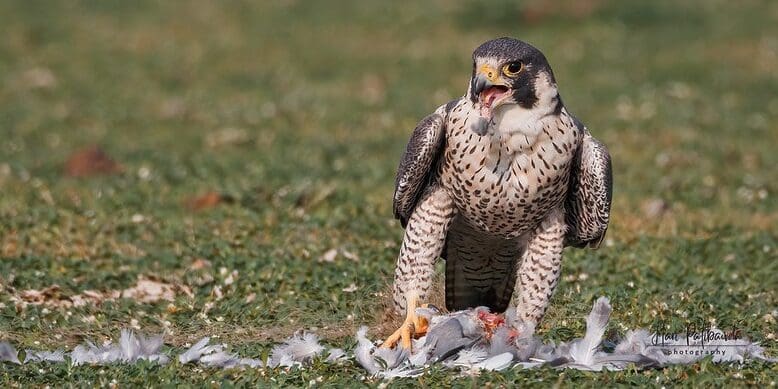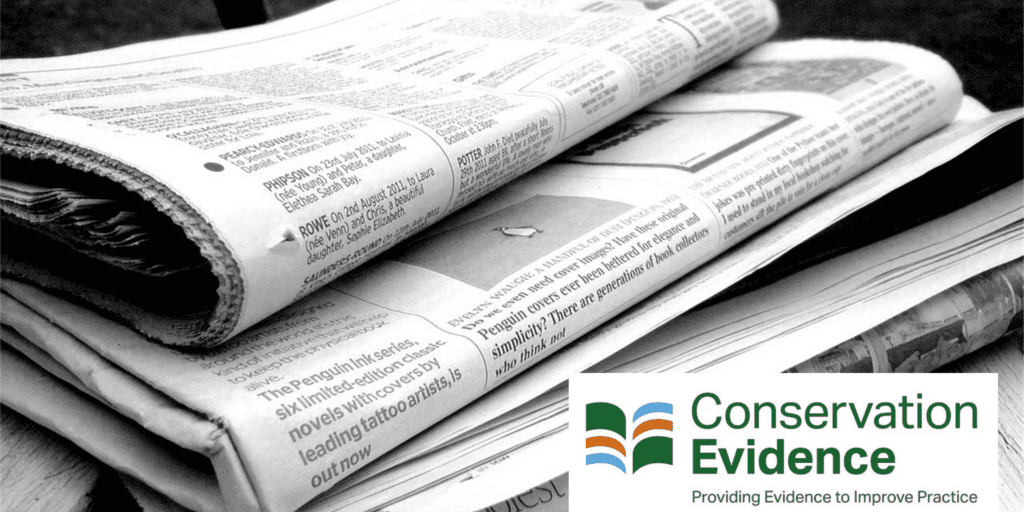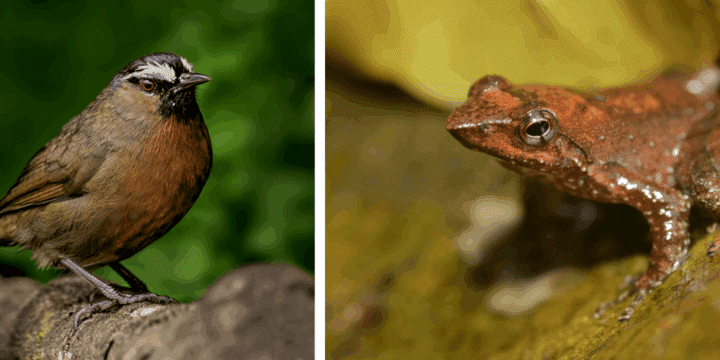1,000 pages of evidence for conservation actions
This week, the sixth edition of Conservation Evidence’s flagship publication, What Works in Conservation, is published. What Works provides a freely-available, comprehensive overview of the expert assessment of evidence for the effectiveness (or not) of management actions collated within Conservation Evidence synopses. It is a freely-available resource for conservation managers, practitioners and policy-makers who want to incorporate evidence into their management decisions.
The exciting addition to What Works in Conservation 2021 is the inclusion of evidence for all mammals, with the addition of the Terrestrial Mammal Conservation and Marine and Freshwater Mammal Conservation synopses, as well as the 2021 update of the Bat Conservation synopsis (the Primate Conservation synopsis was added in 2017). This means that decision-makers working in mammal conservation across the world now have access to a free resource to help inform their work to conserve threatened species.

What’s included?
Flying high – expanding the evidence-base for Bat Conservation
The 2021 edition of What Works includes the results from the assessment of the third annual update of the Bat Conservation synopsis. With new evidence published each year, and summarised in each edition of the synopsis, our revised assessments highlight the value of continually updating the evidence base for conservation. What Works 2021 includes new evidence for 29 conservation actions, 16 of which have changed effectiveness category from What Works 2020 as a result of the newly summarised evidence. This includes 11 actions, ranging from “Use non-lethal measures to prevent bats from accessing fruit in orchards” to “Prevent turbine blades from turning at low wind speeds”, where experts are more certain than previously that the action is beneficial for bats, and two actions where the new evidence remains too limited for a conclusion to be drawn. However, three actions are a little more complex. The use of prescribed burning had previously been assessed as “Likely to be beneficial”, but three new studies have highlighted potential harms, leading to the new assessment concluding there is a trade-off between the benefits and harms to bats of this action. For two other actions, “Deter bats from turbines using ultrasound” and “Breed bats in captivity”, the addition of new studies with mixed results has increased the uncertainty in their effectiveness, changing their assessment category to “Unknown effectiveness” (from “Likely to be beneficial” and “Unlikely to be beneficial”, respectively). This demonstrates the importance of continually building upon a comprehensive, global evidence base, which captures the variation inherent in biological responses to conservation actions.

Deep dive – mixed results for Marine and Freshwater Mammal Conservation
Despite the popularity of whales, dolphins and seals, the Marine and Freshwater Mammal synopsis found a paucity of evidence for many proposed conservation actions. Where evidence does exist, the overall effectiveness of commonly used actions varied. For example, rescuing and releasing stranded or trapped marine and freshwater mammals, and installing exclusion or escape devices for mammals on fishing nets, were found to be beneficial, or likely to be beneficial, respectively. Other actions such as using acoustic devices on fishing gear and hand-rearing orphaned young of marine and freshwater mammals were found to have trade-offs between benefits and harms. Meanwhile, the translocation of marine mammals away from aquaculture systems, with the aim of reducing human-wildlife conflict, was actually found to be ineffective or harmful. This demonstrates the importance of gathering and assessing the available evidence to improve the effectiveness and cost efficiency of future conservation efforts.

Back on dry land – training marsupials for Terrestrial Mammal Conservation
Reading studies from around the world, and from over 70 years of conservation, we love coming across ingenious tests of conservation actions, as well as ingenious actions themselves. In the Terrestrial Mammal synopsis, we discovered that conservationists in Australia have tested whether naive native mammals can be trained to avoid non-native predators, such as cats and foxes. By comparing “trained” bilbies, which were exposed to a ‘mock attack’ by thrusting a dead cat at them and spraying them with cat urine, with “untrained” bilbies not exposed to an attack, researchers found that despite some evidence for changes in behaviour, there was no increase in long-term survival in the trained group. Our assessment concluded that the evidence for that action was too limited to determine its effectiveness, as there were only two studies and ideally this would be tested on a wider range of target species. The assessment was similar for evidence for training captive-bred mammals.

Bringing it home – conservation in your back garden
Although many conservation actions included in What Works are likely to be carried out by practitioners or policy-makers, some can be implemented by the general public. In the Terrestrial Mammal synopsis, five studies tested the effectiveness of using collar-mounted devices (such as bells and neoprene flaps) to reduce the predation of wild mammals by cats, and the assessment found that overall, this was beneficial. Similar results were found for the same action in the Bird Conservation synopsis, but with only two studies, the evidence was assessed as being too limited to draw conclusions. The ongoing update to the Bird Conservation synopsis may provide more information for future assessments.
What Works in numbers
The additive nature of What Works in Conservation means that this new sixth edition is the largest that we have ever produced – for the first time, we have tipped over 1,000 pages. It provides an assessment of the effectiveness of 2,426 conservation actions, covering the results from 15 Conservation Evidence synopses (six synopses have not yet been assessed). The underlying evidence comes from 5,131 individual scientific papers, reports and book chapters, which have reported the results of their tests of conservation actions. And this isn’t just the result of work by the team at Conservation Evidence: 215 experts, practitioners and academics from all over the world have helped to assess the evidence in What Works in Conservation 2021, and we are enormously grateful to all of them for their extraordinarily valuable contribution to the project.
The first five editions of What Works in Conservation have been read online, downloaded (for free) or purchased as a book from the publisher’s website over 67,000 times. We hope that this sixth edition will generate thousands more reads, as conservationists around the world work to incorporate the evidence for what works in conservation into their decision-making, with the ultimate goal of enabling more effective conservation for the benefit of biodiversity and society.



